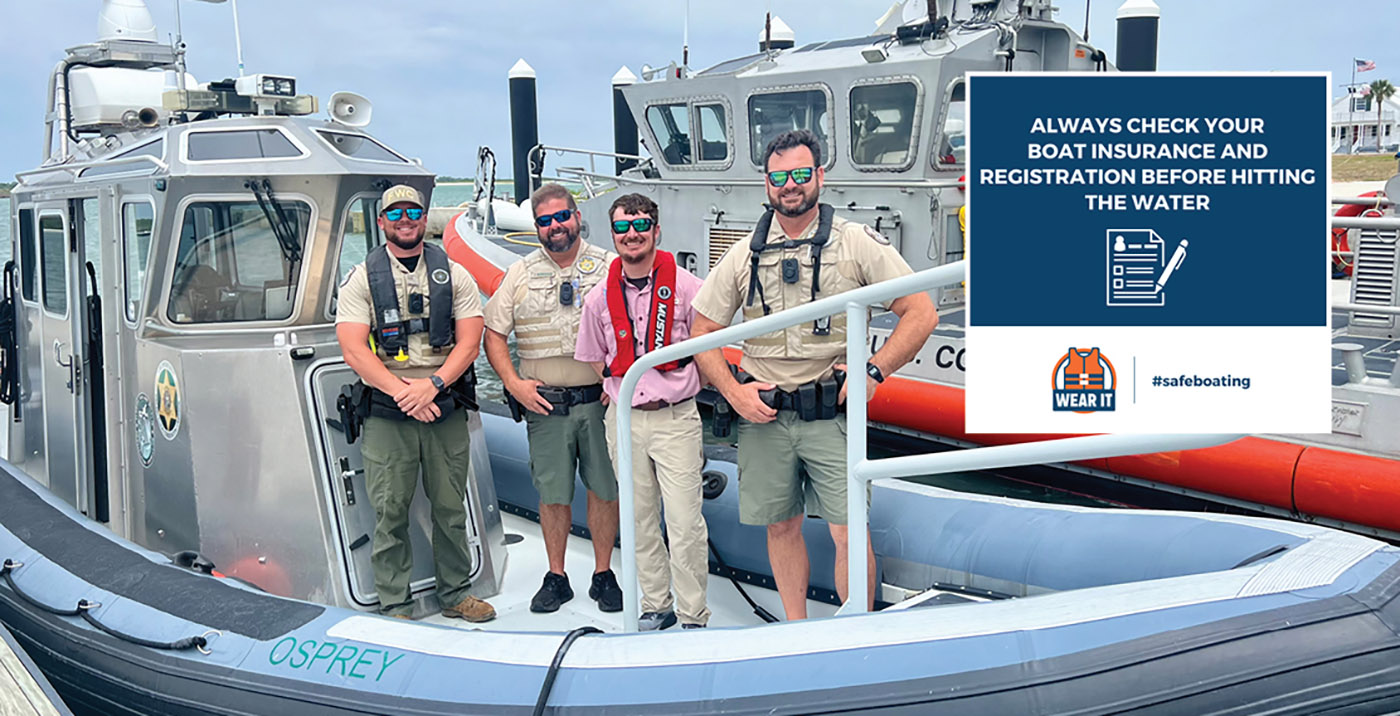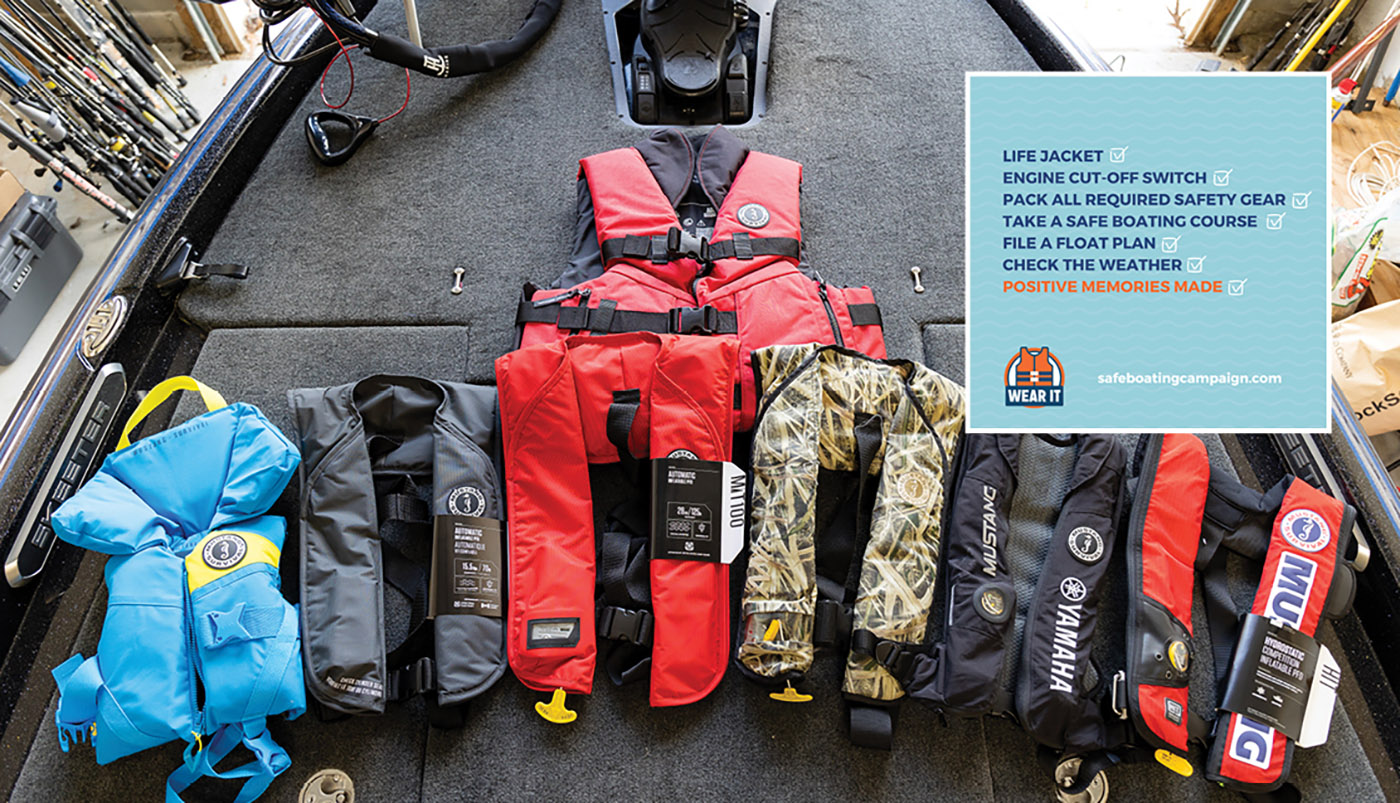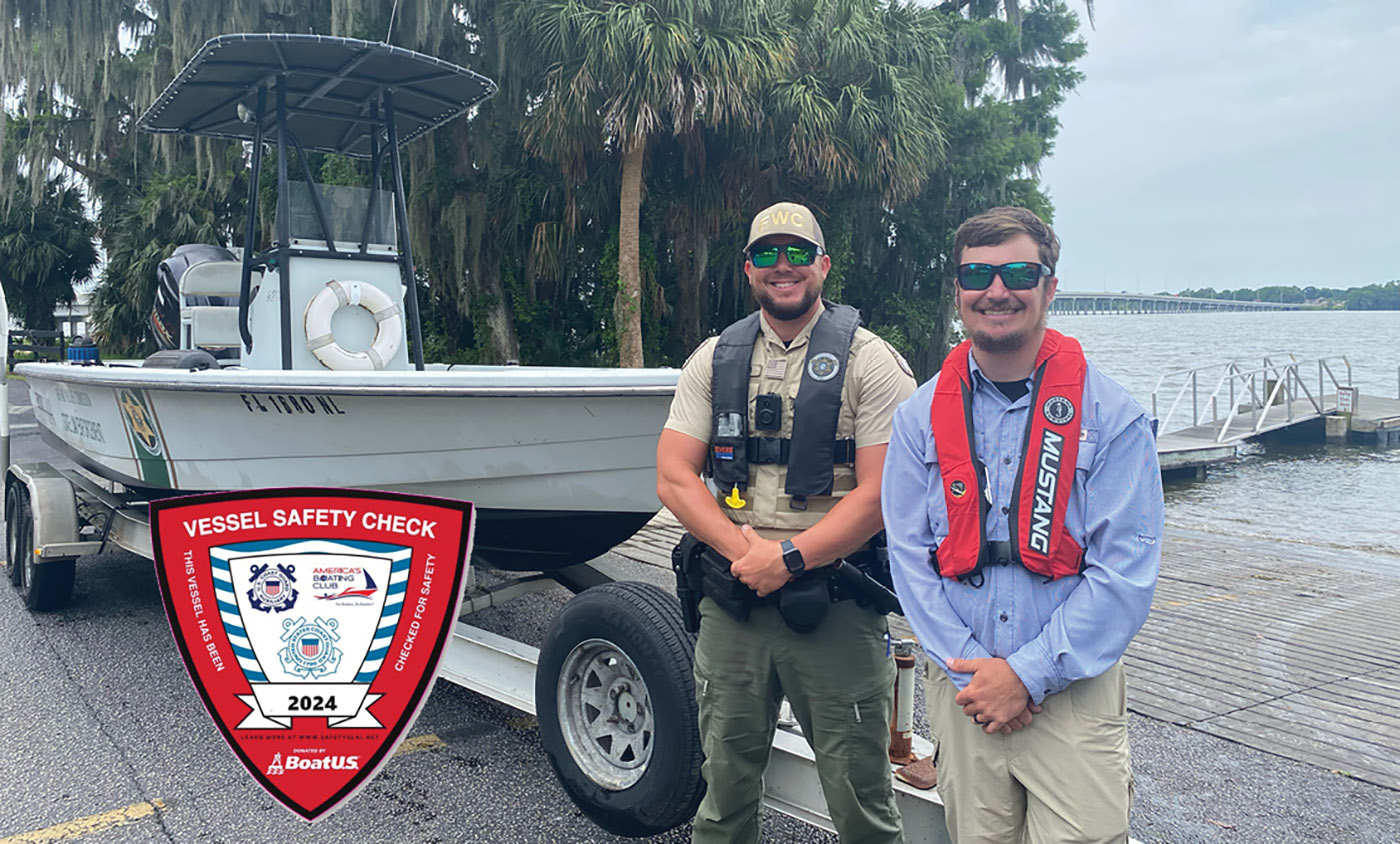Vessel inspections are commonplace no matter where you’re recreating on the water. You may have experienced a routine boating safety check offshore from the United States Coast Guard (U.S.C.G.), at a boat ramp from the local marine patrol unit, or a state agency while fishing. Although there are several things law enforcement personnel may be looking for when they conduct a stop, and the rules may vary depending on vessel type, one thing remains the same – their goal is to keep you safe.

If you are recreating on the water and are approached by any law enforcement agency or marine patrol unit conducting an on-water vessel safety check, listen carefully and follow their instructions. There are a few steps you can take to help the process go as efficiently as possible.
When law enforcement signals for a vessel safety check, put your boat in neutral and allow them to maneuver their vessel to you. Listen carefully for any instructions. Often law enforcement will dock alongside your boat, when being stopped on the water, to safely conduct the inspection. Vessel inspections differ from traffic stops that you may receive in a vehicle. On the road, law enforcement officers need probable cause to conduct a traffic stop such as you not coming to a complete stop at a stop sign. However, on the water safety checks are routine and can be conducted at any point. These random inspections serve as a courtesy to boaters to give them the peace of mind and ensure they are operating the safest possible with all their required gear.

“During a boating safety inspection, we are looking for the safety equipment that is required by law. During these stops, there are times vessel owners may not have inspected their safety equipment in a while. These stops serve as a good reminder of items that are unserviceable, or they may not remember where it was stowed. We use these stops to bring that to the vessel operators attention,” said Chad Weber, Florida Fish and Wildlife Officer.
It’s important to visit the department of natural resources website specific to the state you’re recreating in and consult all their boating regulations. Remember - regulations change based on the length of the vessel, vessel type, activity, and the location you’re recreating. Make sure to review this information frequently and especially before visiting a new body of water. Whether you’ve experienced several boating safety checks on the water, or you’re anxious about receiving your first one, it’s helpful to know the minimum required items law enforcement will be looking for. These items include, but are not limited to:

There are additional opportunities to become a more prepared boater this boating season and help you maximize your time recreating. To save time on the water and better prepare for any inspections you may receive during an outing, you can schedule a free vessel safety check on your boat with the United States Coast Guard Auxiliary or United States Power Squadrons. There are several benefits to scheduling a free vessel safety check that include:
United States Coast Guard Auxiliary. However, if the U.S. Coast Guard Auxiliary finds any discrepancies during a free vessel safety check, you’ll receive a written report and be given the opportunity to make corrections before your next outing on the water.
All vessel safety checks serve the same purpose, and that’s to make sure you’re as safe as possible when recreating on the water. Whether you’ve been boating for 30 years or you’re prepping for your first outing, use these tips as a reminder to take boating safety checks seriously. An extra 20 minutes of preparation can result in the ability to safely navigate any emergency. Using these tips, you’ll be back to recreating and having fun on the water in no time!
Back to Blue Life

If you are recreating on the water and are approached by any law enforcement agency or marine patrol unit conducting an on-water vessel safety check, listen carefully and follow their instructions. There are a few steps you can take to help the process go as efficiently as possible.
- Be familiar with all boating regulations specific to the vessel type you’re operating and the geographic location in which you are recreating. Regulations can change based on boat length, vessel type, and the operating location (offshore, navigable waters, lakes, rivers, etc.)
- Know the equipment law enforcement is going to check for and be able to quickly locate it within your vessel. Have a designated storage location for all safety equipment, so that it’s
easily accessible. - Test all your safety equipment and make sure it is properly functioning.
- Check expiration dates on fire extinguishers, visual distress signals (flares), and inflatable life jacket cartridges
When law enforcement signals for a vessel safety check, put your boat in neutral and allow them to maneuver their vessel to you. Listen carefully for any instructions. Often law enforcement will dock alongside your boat, when being stopped on the water, to safely conduct the inspection. Vessel inspections differ from traffic stops that you may receive in a vehicle. On the road, law enforcement officers need probable cause to conduct a traffic stop such as you not coming to a complete stop at a stop sign. However, on the water safety checks are routine and can be conducted at any point. These random inspections serve as a courtesy to boaters to give them the peace of mind and ensure they are operating the safest possible with all their required gear.

“During a boating safety inspection, we are looking for the safety equipment that is required by law. During these stops, there are times vessel owners may not have inspected their safety equipment in a while. These stops serve as a good reminder of items that are unserviceable, or they may not remember where it was stowed. We use these stops to bring that to the vessel operators attention,” said Chad Weber, Florida Fish and Wildlife Officer.
It’s important to visit the department of natural resources website specific to the state you’re recreating in and consult all their boating regulations. Remember - regulations change based on the length of the vessel, vessel type, activity, and the location you’re recreating. Make sure to review this information frequently and especially before visiting a new body of water. Whether you’ve experienced several boating safety checks on the water, or you’re anxious about receiving your first one, it’s helpful to know the minimum required items law enforcement will be looking for. These items include, but are not limited to:
- Life Jackets
- Throwable Device (Type IV)
- Navigation Lights
- Sound producing device (whistle,
horn, etc.) - Fire Extinguisher
- Visual Distress Signal (Flares, e-flares etc.)
- Engine Cut-off switch (ECOS)
- Boating Registration and Insurance

There are additional opportunities to become a more prepared boater this boating season and help you maximize your time recreating. To save time on the water and better prepare for any inspections you may receive during an outing, you can schedule a free vessel safety check on your boat with the United States Coast Guard Auxiliary or United States Power Squadrons. There are several benefits to scheduling a free vessel safety check that include:
- Reduced violations on the water
- Ability to correct mistakes and avoid potential violations
- Potential vessel insurance discounts (consult your insurance provider)
- Peace of mind and confidence in your equipment
- Vessel checks conducted at your convenience and location (boat ramp, driveway, marina, etc.)
- Vessel safety check sticker that’s recognized by all law enforcement agencies
United States Coast Guard Auxiliary. However, if the U.S. Coast Guard Auxiliary finds any discrepancies during a free vessel safety check, you’ll receive a written report and be given the opportunity to make corrections before your next outing on the water.
All vessel safety checks serve the same purpose, and that’s to make sure you’re as safe as possible when recreating on the water. Whether you’ve been boating for 30 years or you’re prepping for your first outing, use these tips as a reminder to take boating safety checks seriously. An extra 20 minutes of preparation can result in the ability to safely navigate any emergency. Using these tips, you’ll be back to recreating and having fun on the water in no time!
Back to Blue Life
